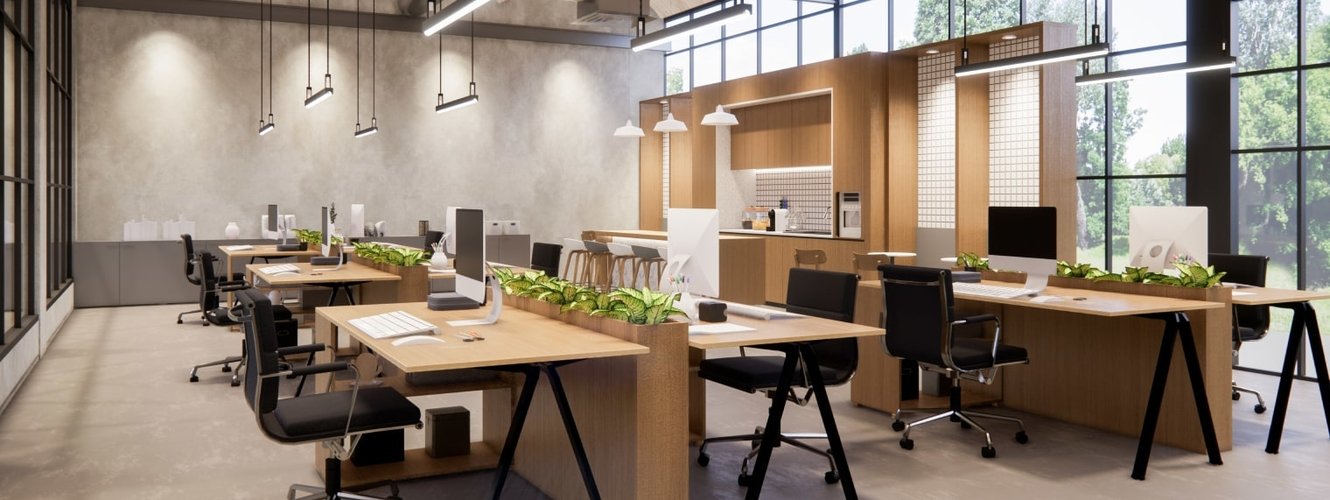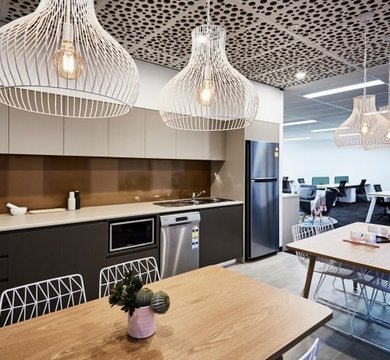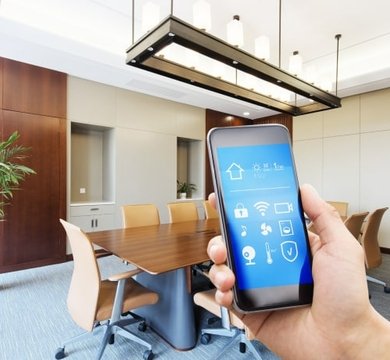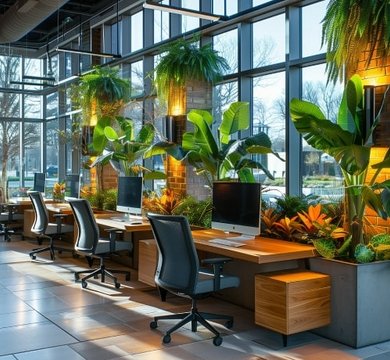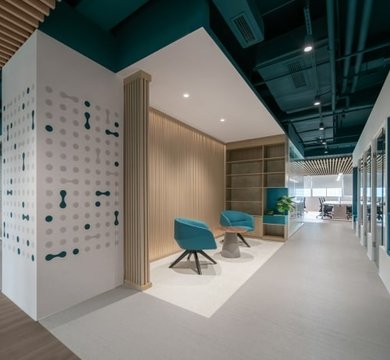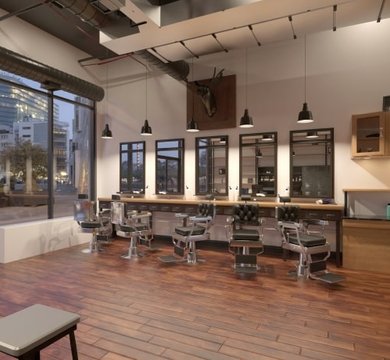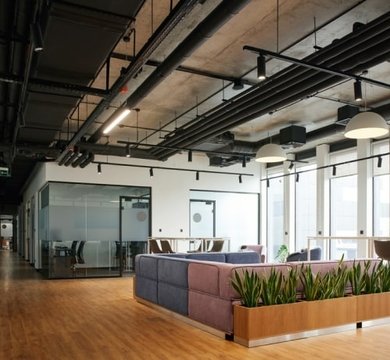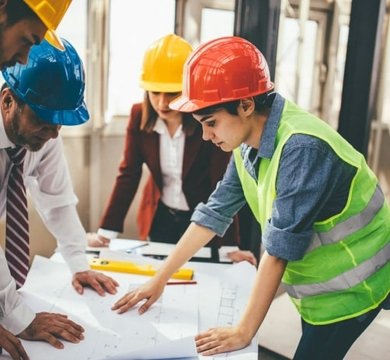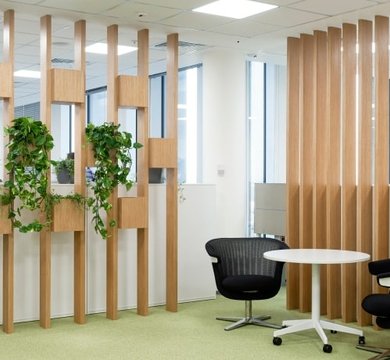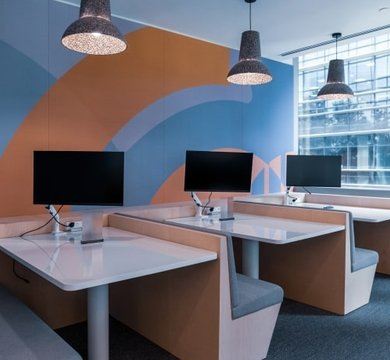Gone are the days when office refurbishments centred around the bricks and mortar of a premises. Today, workplace trends of the future are at the heart of every project. It’s essential to focus on people, technology and how spaces can adapt in an ever-evolving landscape, rather than let existing floorplans and walls dictate how workplaces are designed.
So, what are the workspace trends for 2024? Our latest article outlines developments you may already know about and also reveals some you didn’t see coming.
Technological Innovations
Taking an objective look at the age of your current workforce, together with those you’d like to recruit in the future, is essential to understanding what future workplace trends you should be allowing for in an office refurbishment.
Emphasis will probably fall on Generation Z – those born between 1997 and 2012. They’re often described as the first ‘fully digitally native generation’, and they will already be proficient in many of the below disciplines. They’ll also be early adopters of innovative tech and will expect their employers to be ahead of the future workplace trends curve.
Integration of Artificial Intelligence
There was a collective sigh of relief when it became clear that AI wouldn’t replace every single worker. Instead, employers will start revising their recruitment strategies so they focus on those who can use AI to create new efficiencies.
The use of AI will cross over from employees to office designs too, with the ability to analyse large datasets on worker movement and interactions to help suggest efficient workplace layouts.
AI will also play a part in how offices of the future will be managed. We expect more office refurbishments in London and around the UK to incorporate AI-powered sensor-based systems that monitor noise levels, temperature, air quality, humidity and even electromagnetic fields. This data will be juxtaposed with productivity, health and wellbeing feedback to create custom working atmospheres.
Virtual and Augmented Reality in the Workplace
Although they sound like far-off workplace trends of the future, Virtual Reality (VR), Augmented Reality (AR) and Mixed Reality (MR) will play a greater role in business operations sooner than you think. The reason? It’s evident that hybrid working is very much here to stay.
Incorporating VR, AR and MR bridges the distance gap, with the ability to connect people who are located hundreds of miles away in a more immersive sense than just a video call. Avatars, virtual whiteboards, MR town-hall meeting spaces and the ability to share content that you can almost touch will re-shape how meetings take place and training is delivered.
Flexible Work Arrangements
9-5 or 5-9? Retaining current employees and recruiting new talent will increasingly hang on an employers’ ability to offer flexible working arrangements. It’s one of the future workplace trends that’s already got business in a firm grip. Now is the time to reframe your thinking to win over workers.
Remote Work Evolution
The business landscape is at a crossroads. When Flexa, the flexible jobs board, crunched 9,360 adverts, 2.7 million searches and 27,880 global worker preferences from January to November 2023, it found 51% sought remote roles.Conversely, the average job advert in 2023 requested 1 to 2 days of in-office working.
Additionally, one of the workplace trends of the future that spoke the loudest was the desire for a ‘little flex time’, which would see employers offer a 9-5 working pattern but with the flexibility to start later or finish earlier to accommodate school drop offs, gym classes and late nights, for example.
Hybrid Work Models
The time of full time home working has passed but the workforce isn’t ready to permanently enter the office again. What is clear is that professionals have proved they can work autonomously but the desire to interact face-to-face, on occasion, is re-emerging.
As reported in Forbes, the hybrid work model – when employees split their time between the office and alternative locations - is one of the future workplace trends gaining the quickest traction. In fact, Forbes reports hybrid working patterns are forecast to rise to 81% adoption moving forwards.
Organisational Trends in the Workplace
The workplace is fast becoming a holistic environment where there is much more to life than money. Health is increasingly wealth, as is a sense of inclusion.
Emphasis on Employee Wellbeing
There has been a tangible shift in how businesses treat employees and we see that trend strengthening. While happiness and satisfaction have been traditionally measured by salary and wage rises, future workplace trends will place greater emphasis on wellbeing and mental health in the workplace.
For example, Flexa’s research showed 33% of workers wanted jobs offering mental health support – a figure that’s up 16% in just one year. There’s also a growing argument around giving employees paid time off to exercise – even if it falls within the working day. The benefits of Crossfit before lunch? The potential for fewer workers with short- and long-term illnesses; increased productivity and focus, and better employee satisfaction and engagement. Maybe a workplace gym is the solution? It’s an idea our interior office designer services can include.
Diversity, Equity and Inclusion (DEI)
Diversity, equity and inclusion will underpin all workplace trends of the future as enjoying a fit-for-purpose, stimulating office should not be the privilege of an exclusive club.
Being DEI inclusive is far more than a ramp at the entrance and a lift to all floors. At MPL, the team prefixes all thought processes with ‘how can everyone access this space and gain the benefits?’
Of course, physical access is a top priority but considering an estimated 1 in 7 of us suffers from a hidden disability, such as autism, ADHD, dyslexia, dyspraxia or OCD, also designing offices for those who are neurodiverse is where the future lies.
Quiet zones, adjustable lighting, less use of patterns, wayfinding signage that incorporates symbols as well as words and even a prayer room (as we included in our commercial refit for Lanes Group Plc in Slough), should all be office considerations moving forwards.
Workplace Design and Sustainability
In the rush to embrace future workplace trends, businesses should not neglect good design and sustainability. Careful planning will ensure an office fitout works from day one but also performs well into the future, with the ability to adapt as new trends emerge.
Adaptable Office Spaces
Rigid floorplans and spaces dedicated to one department do not always align with modern ways of working. Growing in popularity is activity based working – which disposes of one assigned desk per person where you perform all tasks, in favour of multiple workstations that are dedicated to a particular task, with staff moving freely between them.
The beauty of activity based working is it accommodates a number of working styles – hybrid, freelance and hot desking. It’s also adaptable enough to be switched about according to incoming projects and fluctuating office attendance.
Sustainable Practices
Hybrid working patterns, such as spending more time at home, are recognised as ways of cutting our carbon footprint – less commuting, less emissions – but what about the time employees spend in the office?
Sustainable office design can reduce energy and water consumption, enhance indoor air quality, improve waste production and recycling rates, and reduce materials sent to landfill. Achieving these benchmarks will strengthen a business’s eco credentials, which is becoming increasingly important to stakeholders and prospective employees.
Collaboration and Communication
What do you prefer? Spending all day, every day with your colleagues or are you already embracing future workplace trends by switching to a hybrid pattern? Looking ahead, our professionals' thoughts and progress will be brought together in exciting new ways.
Enhanced Collaboration Tools
Decentralisation and digitization have accelerated the adoption of enhanced collaboration tools. Whether they’re working under the same roof or are spread across the globe, employees are staying connected using cloud-based communication, workflow and project platforms, such as Slack, Monday and Notion.
We expect more organisations to adopt this approach moving forwards, which shifts the focus away from managing staff to managing projects. Such platforms sit perfectly with an increasing number of companies who allow employees to self-manage their hours.
Project-Based Team Structures
Enhanced collaboration tools have a strong synergy with project-based team structures. It’s one of the most exciting workplace trends of the future, with perhaps the end of set job roles and specific departments, and a move towards a more fluid operation.
Employees will be hired for their skills and critical thinking, with complementary people being brought together in teams to tackle certain projects. The benefits are numerous, from a greater sense of achievement and a heightened sense of belonging, to increased daily diversity and agility that staves off boredom.
Conclusion
Are you a trailblazer when it comes to workplace trends of the future? If you’re not, you’ll soon find your focus will be on keeping up with competitors who are offering modern ways of working.
Even if your current staff aren’t demanding change, people looking to work with your business will. Being bold will mean breaking long-held conventions but as older generations retire and today’s teenagers become tomorrow’s workforce, standing still is not an option.
MPL Interiors can get you future ready, with our range of commercial office and retail design solutions. Please get in touch to discuss your workplace set up today.

